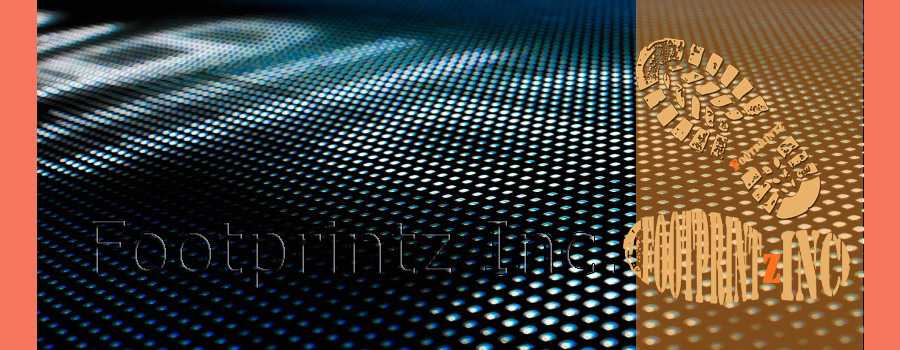




Q: Is turning an LED on and off bad for it? What's "PWM"?
A: No. LEDs are semiconductors, which are quite happy with transitioning between an "on" and an "off" state. In fact, most LED flashlights provide extra output levels by flickering the LED at a faster rate than the human eye can usually detect. When the output is not filtered and smoothed out, the flicker can be seen when the light source, subject, or viewer moves. This flicker is commonly known as "PWM," or "Pulse Width Modulation." Unfiltered PWM must be driven to frequencies of at least 50Hz, or else the flickering will be too pronounced and will irritate users.
Q: How can an LED be more efficiently driven?
A: LEDs are more efficient at lower drive levels. This means that slow, unfiltered PWM is less efficient than filtered and smoothed output, known as "current regulation." This is because an ordinary PWM light is active part of the time and completely off at other times, but during the active portion, the LED is being driven at full blast, which is comparatively inefficient. Therefore, a multi-emitter, current-regulated light is more efficient than a single-emitter, PWM light, as the LEDs in a multi-emitter light will operate more efficiently (and use less power) than the LED in a single-emitter light when pushed to the same amount of output.
Q: What's the "Luxeon Lottery"?
A: Different samples of "white" Luxeon emitters, even ones of the exact same classification (known as "bin"), can vary in their light output and tint at a particular drive level. Some are slightly green, or purple, or other colors, while others have less noticeable coloring. This term can apply to any high-powered LED with natural variations in tint and output.
Q: What's "Vf"?
A: Vf is the term for an LED's forward voltage. Forward voltage is the voltage required to activate an LED. For example, if you want to power a Cree XR-E at 150mA, it needs about 3V. If you want to power it at 700mA or thereabouts, the Vf will rise to about 3.8V. It's like a minimum activation voltage for particular currents.
Q: Why is Vf important, and how do I measure it?
A: To determine a particular LED's Vf, you'll have to look at its datasheet. For example, Cree's XR-E datasheet is found at http://www.cree.com/products/pdf/XLamp7090XR-E.pdf. In page 6 of that PDF, you'll see a graph of Vf. This means that the Vf of a particular emitter is not fixed, but varies, with the available voltage determining the emitter's "natural" drive level. For example, if you look at where the graph reads "3V," you'll see that it corresponds to a "Forward Current" drive level of about 160mA. This means that if you solder an XR-E to the appropriate terminals in an ordinary Minimag, which operates at 3V, you'll get about 30 lumens of floody, white output.
The downside to this is that small changes in voltage can have a huge effect on forward current. For this reason, most drivers supply a constant current instead of just a constant voltage, as current is really what determines an emitter's output. Therefore, if you want to power an XR-E at 700mA from a pair of AA NiMHs (a common task), you'll need a driver that can boost the voltage from 2.4V to something closer to 3.6V as well as supply a constant 700mA. If you tried direct drive with this setup, simply connecting the emitter to the battery, the emitter would barely light up at all.
It is important to note that even emitters of the same type and "bin" (sorting system based on several characteristics) can have small variations of Vf. For example, you may have an emitter that has a Vf of 3.7V when driven at 1000mA (or 1A), while someone else has an emitter of the exact same type and bin with a Vf of only 3.5V at the same 1A current. This means that their flashlight will consume only 3.5W of power while yours consumes 3.7W, although both would have the same output given the identical drive level.
You can find the Vf of your emitters at particular drive levels with a basic DMM. If you are using a driver and you don't know the current it provides, or if you're not using a driver (a DD setup), put the DMM in the circuit next to the emitter and check the current. Next, complete the circuit without the DMM in it, and put the DMM's + and - probes on the emitter's + and - contacts, respectively. This is the Vf at the current level you measured for this particular emitter.
Most emitters can handle a bit of current at reverse voltage, so if you wire one backwards but don't activate it for more than a second or two (at most), it should be okay. Just don't make a habit of it.ÂÂ
Q: What's "bin"?
A: Bin codes are used to sort LEDs by luminous flux (lumen output at a specified drive level), color, tint, and Vf. For example, a U-bin Lux III will have more output than a T-bin Lux III at a set drive level. Commonly desirable flux bins (at the time of writing) are:
-Lux I: R or S
-Lux III: T or U
-Lux V: W or X
-XR-E: Q2 through R2
-SSC P4: U or V
-Rebel: 0080 or 0100
Q: What's the deal with LEDs and heat?
A: Forget anything you learned about LEDs from the National Geographic Channel's "Manmade" show focusing on flashlights, especially from the interview with the Philips employee. LEDs are quite efficient relative to other light sources, but they do produce heat. In fact, most aren't even 30% efficient! This means that the more power you pump through them, the more light and heat they will produce. Unlike incandescent bulbs, however, LEDs are actually damaged by heat. It's common for a well-driven power LED to exceed 120F (quite hot to the touch). Too much heat for prolonged periods can decrease the life of an LED or even kill it. The efficiency (and therefore output) of an LED suffers with heat as well, meaning that with most lights, there is a certain drive level above which the increased heat will actually result in less output than a more moderate drive level. To combat this, well-designed flashlights provide a method to get the heat away from their LED. The most basic (and by far the most common) method is the heat sink. This is nothing but a chunk of metal that contacts the LED and is heated by it, leeching the damaging heat away from it. The next step is to somehow transfer that heat to the environment, where it can dissipate. This means that the heat must have a "thermal path" which leads from the LED to the heat sink to the surrounding flashlight to the environment. Some flashlights benefit from being held by someone's hand so that their bloodstream can act as a heat pump (the blood near the flashlight is heated, moves away, and cools, and the cycle continues). Other lights have fins that increase the surface area which contacts the outside air. LED dive lights don't have much of a problem here, since the surrounding water is like an enormous heat sink. Bike lights benefit from the cool night air rushing past them.
Q: What's the deal with LEDs wired in series or parallel? What about "current hogging" and "thermal runaway"?
A: If your input voltage and current are acceptable, LEDs can be run in series or parallel. The issue is how well the setup will work, and how reliably. LEDs experience "Vf shift" when they heat up, with Vf dropping as temperature rises. With a constant-current (CC) source, this is no problem, as the only effects will be less light (because of the heat) and less power consumed (a lower Vf affects the V*A=W formula). Otherwise, there won't be much to worry about. With a constant-voltage (CV) source, however, the Vf shift comes into play. If Vf for a particular current goes down, but you're only keeping the VOLTAGE constant, the current at that voltage will go up. This is a problem because it will cause more heat and further Vf shift, drawing more current, leading into a feedback loop where the LED(s) eventually pop from the stress. This is what is called "thermal runaway." As you might guess, this is an issue when deciding between a series or parallel LED setup. Recall that devices in series will all draw the same current (at whatever voltage each device needs for it), while devices in parallel all see the same voltage while having potentially different current levels going through each one. If you have a CC driver running a series LED string (a "string," or "leg," is a group of devices, like LEDs, connected in series), you won't have thermal runaway problems. However, LEDs in parallel, even driven by a CC source, can experience "current hogging." As the devices are in parallel, they won't necessarily have the same current. Each string in a parallel array driven by a CV source can experience thermal runaway. If driven by a CC source, one string can still undergo thermal runaway, but another string sharing the CC source will simply get less of the total current - the current was "hogged' by the other string. If your CC source in such a setup is set to drive LEDs near their limits, then having one string bear the load intended for two or more strings can be problematic. Remember that when LEDs pop, the circuit breaks, leaving the other strings in a parallel setup with a kind of surplus of current, which leads to even more rapid thermal runaway, which will eventually leave you in the dark. This is why it's generally recommended to wire LEDs in series, as well as using a CC source if possible. If you don't have a CC source, use an adequate resistor to limit current.
Q: LEDs are all the same, right?
A: Wrong. See LED Types.
DIP TYPE: 1,2,3,5,8,10mm in size.
Ovel shape,
SMD type
Surface mount
Power LEDs
Multi Chip Modules
Direct AC LEDs
and more....